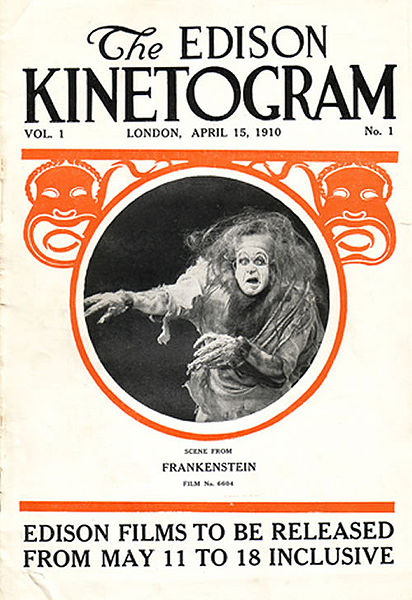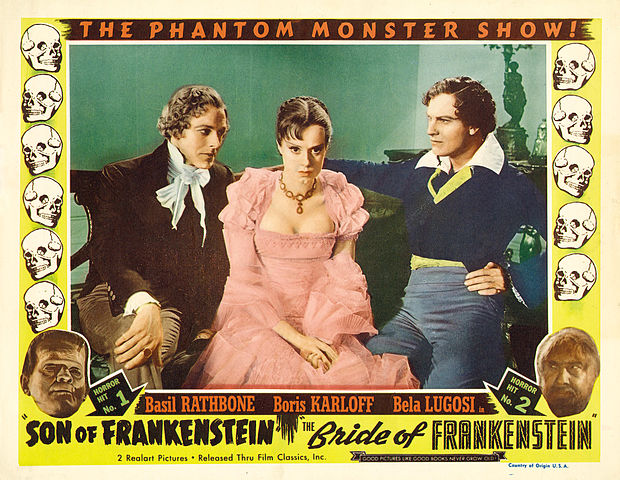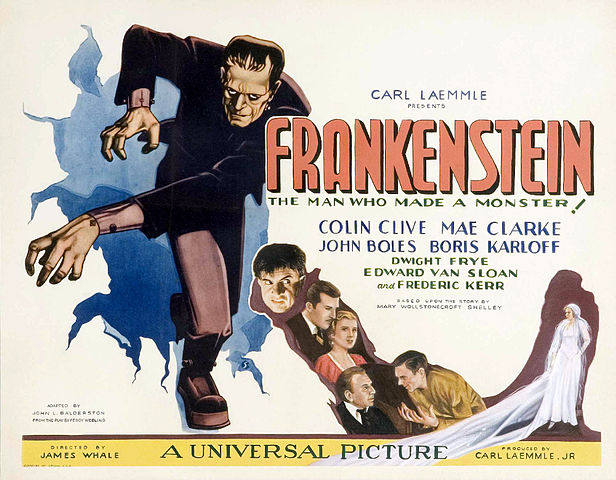
Frankenstein; or, The Modern Prometheus is a novel written by the English author Mary Shelley (1797 – 1851). Prometheus is a figure in Greek mythology who stole fire from Mount Olympus, home of the mythological Greek gods, and gave it to mankind. As punishment for this theft, Prometheus was chained to a rock where his liver was eaten daily by an eagle. Each night it grew back, since he was immortal, and it would be eaten the next day as well. Prometheus was finally rescued from this situation when the Greek hero Hercules killed the eagle and freed him. By comparing the main character of her book to Prometheus, Mary Shelley made a clear reference to people who do something very bold and daring – sometimes breaking society’s conventions or rules – and are punished as a result. The character of Victor Frankenstein is a scientist who creates a living creature in a scientific experiment. Many people who have not read the book make the mistake of thinking of the creature or monster as Frankenstein. The creator of the monster was Frankenstein, the scientist. The creature should be called Frankenstein’s monster. All first year students at Thammasat University should note that Mary Shelley was 18 years old when she began to write Frankenstein; or, The Modern Prometheus. So at that age, it is possible to write a famous novel that people will still read hundreds of years from now. When Frankenstein was first published in London, the author was only 20 years old, the age of a third year student at TU. The novel was inspired by Mary Shelley’s travels in Europe, especially in Germany, where she and her husband, the poet Percy Bysshe Shelley, enjoyed speaking about magic and other mystical subjects. In the early 1800s, it was believed that if electrical current is run through people, it can help their health. Viewers of the movies about Frankenstein will recall that the monster is brought to life by the scientist turning on electric switches. Mary Shelley’s friends decided to have a competition about who could create the best horror story and she wrote down a tale about a scientist who created life, but then regretted what he had done. The novel was a success and film adaptations have been made since an early silent movie in 1910.

Students and ajarns may enjoy I, Frankenstein, a film from 2104 starring Aaron Eckhart, Miranda Otto, and Bill Nighy in the collection of the Rewat Buddhinan Media Center, Pridi Banomyong Library. In his nonfiction work Danse Macabre, the writer Stephen King lists Frankenstein’s monster alongside such creatures as The Incredible Hulk as popular examples of the horror genre later inspired by Mary Shelley’s book. King calls the novel Frankenstein a Shakespearean tragedy, discussing whether Dr. Frankenstein’s mistake was trying to create life, which should only be done by God, or not taking responsibility for what he had created. In modern times, writers sometimes refer to Frankenstein when they wish to argue about whether scientists are creating atomic bombs or genetic manipulation without being responsible for what happens after these creations are added to the world. The Frankenstein story acquired new international fame with the 1931 Universal Studios production of Frankenstein directed by James Whale, starring as the monster Boris Karloff, a British actor named William Henry Pratt who took a Russian stage name to frighten audiences. In 1935, James Whale directed a sequel to this hit movie, Bride of Frankenstein, about what happens when a female partner is created for the monster, a subject that Mary Shelley dealt with in her novel. Many other sequels and productions resulted for movies, TV, and the stage, up to 2016, when a Frankenstein ballet by the British choreographer Liam Scarlett was staged. Some films that are not really adaptations of the Frankenstein story were inspired by it, such as the The Rocky Horror Picture Show in 1975 and the Mel Brooks comedy from 1974, Young Frankenstein. Readers and audiences are clearly still fascinated by the theme of Dr. Frankenstein and his monster.

Thailand and Frankenstein
Mae Naak and Company: The Shifting Duality in Female Representation on the Contemporary Thai Stage, an article from 2006 in the Asian Theatre Journal, can be read at the TU Libraries on the JSTOR database. In the article, Catherine Diamond, a professor and theatre director at Soochow University, Suzhou, China, notes that His Majesty King Vajiravudh (Rama VI) was one of the major proponents of the European-style drama in Thailand. HM King Rama VI also
created an appearance of modernity for women in order to support his ideals in nation building. “He emphasized the importance of “modernizing women’s clothing and hairstyles, which in reality was a feminizing on a Western model; women had a role in nationalism, but an adjunct one” (Fishel 1999: 158). However, the passionate and outspoken women who transgress his model appear as benighted “brides of Frankenstein,” manqué Western women, who lose their graceful Thai manners and gain little in return. The king himself created such a character in the willful and self-destructive Meh Sam-ang in [his play] Ha Loh (The Shield).
By bringing in a reference to the Bride of Frankenstein when dealing with the challenges of adapting to modern Western styles, HM King Rama VI showed his awareness of the dangers described in Mary Shelley’s novel.
Enjoying Frankenstein’s monster.
More recently in the Kingdom, the warnings contained in the story of Frankenstein and his creations have become less visible, and people tend to celebrate the character of Frankenstein’s monster. In April, The Nation reported that Thailand Comic Con, billed as the Kingdom’s biggest pop culture festival, had returned to Royal Paragon Hall for its third edition. Drawing almost 100,000 visitors, Thailand Comic Con featured such entertainment characters as Batman and Spider-Man. Salita “Jukkoo” Klinchan, a contestant from Season 2 of “The Face Thailand” told The Nation that in terms of comic books:
I like Frankenstein too. Most people think he’s a bad guy but I think he’s a good nerd.
Dream World Amusement Park, at 62 Moo 1, Rangsit-Ongkarak Road, Thanyaburi, Pathum Thani, seems to agree that Frankenstein’s monster is a good nerd to entertain young Thai visitors today. Alongside different rides and a Giant House from the Jack and the Beanstalk fairy tale, Frankenstein delights visitors to a Haunted Mansion as well as a werewolf, Dracula, and other beloved horror movie icons.

(All images courtesy of Wikimedia Commons)
